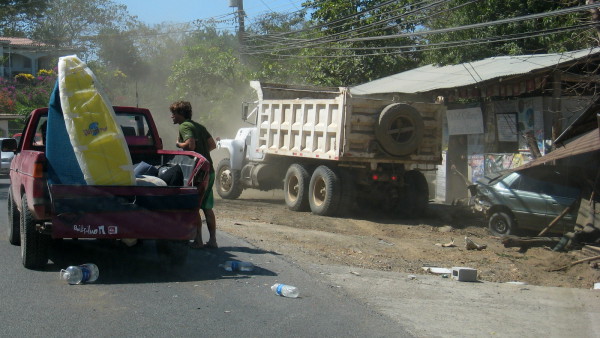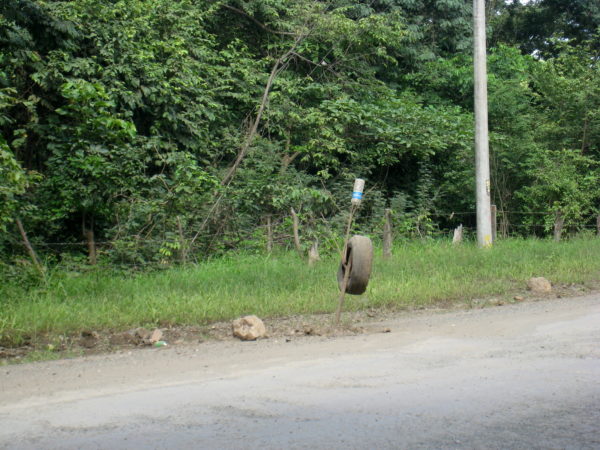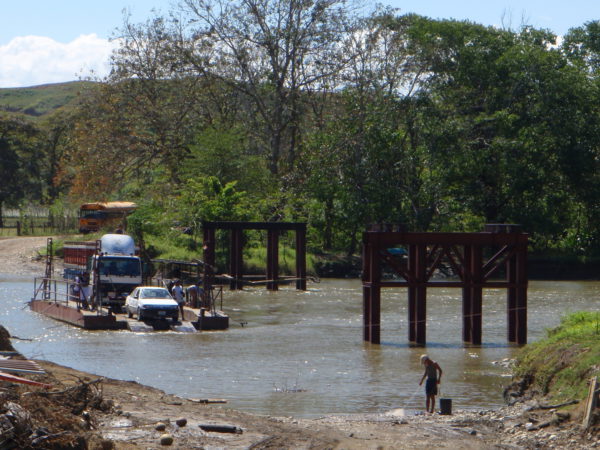
Driving a rental car in Costa Rica has distinct advantages and disadvantages, but if you do get behind the wheel you’ll be happier and safer if you heed the driving tips below.
- Slow down and be careful. You are in an unfamiliar environment, and the unexpected is the rule rather than the exception.
- If you see a police officer standing by the side of the road waving at you they are probably trying to pull you over and may be about to step in front of your vehicle. Seems like a suicidal technique and indeed in 2017 an officer was run over and killed when a car failed to stop.
- Driving at night is not recommended—It is dangerous because of the high percentage of other drivers who have been drinking, the inability to see potholes in the dark, precipitous drop-offs without guardrails, and because you will miss all of the scenery. Another danger is car-jackers or robacarros and bajonazos who strike almost exclusively after dark (and almost exclusively in San José).
- A standard car may be half the price of an SUV and the vast majority of tourist destinations are on paved roads.
- Warning Triangles and Cones—The Tico version of orange cones and highway flares is a branch or pile of sticks in the road. Slow down, there is probably a dangerous situation ahead. Despite a new law requiring every vehicle to carry reflective warning triangles old habits are hard to break…we’ve seen the triangles used to prop up a “warning branch.”

Watch out for impromptu signs made of a stick driven into the ground with some sort of flag (boot, bottle, garbage bag, tire, old plastic dolls head…) attached to the top and warn of places where the road has been washed away, crumbled down the mountainside or as in this case a conduit under the road has collapsed leaving a gaping hole. Branches in the roadway indicate a hazard ahead. - Do not leave anything of value in your car, ever—Not only is it likely that it will be stolen, but you may be responsible for the damage the thieves do getting it out.
- Rental Cars cannot be taken across the international borders to Panama or Nicaragua. Some agencies will allow you to drop one car off in Costa Rica, cross the border on foot and pick up a new car on the other side for a fee.
- Tickets—Modern traffic enforcement exists in Costa Rica and you can expect to face radar guns. Although Central America has well established cultures of bribery we recommend that you do not ever pay your “fine” on the roadside (tips on bribery).
You can have your rental agency add the fine to your credit card charges when you turn the car in (be prepared… it could be $400-$800 depending on the offense). - Although 4WD may not be necessary to reach your destinations if you can afford it rent a large SUV with full air bags (many of the smaller ones have none). Fatal accidents are ~10 times more common in Costa Rica than the U.S.
- Stay off the area just above high tide line—Driving is prohibited on nearly all Costa Rican beaches, but on the few where it is allowed please avoid the sand between the high tide mark and the trees because this is where the sea turtles make their nests.
- Don’t count on road signs for navigation—Although the situation is slowly improving there are very few.
- A GPS for turn by turn and a good map for the big picture are the best ways to navigate.
Before you get behind the wheel there are some bizarre aspects to renting a car in Costa Rica. We’ve made this list of tips for choosing a company and navigating the rental process.

